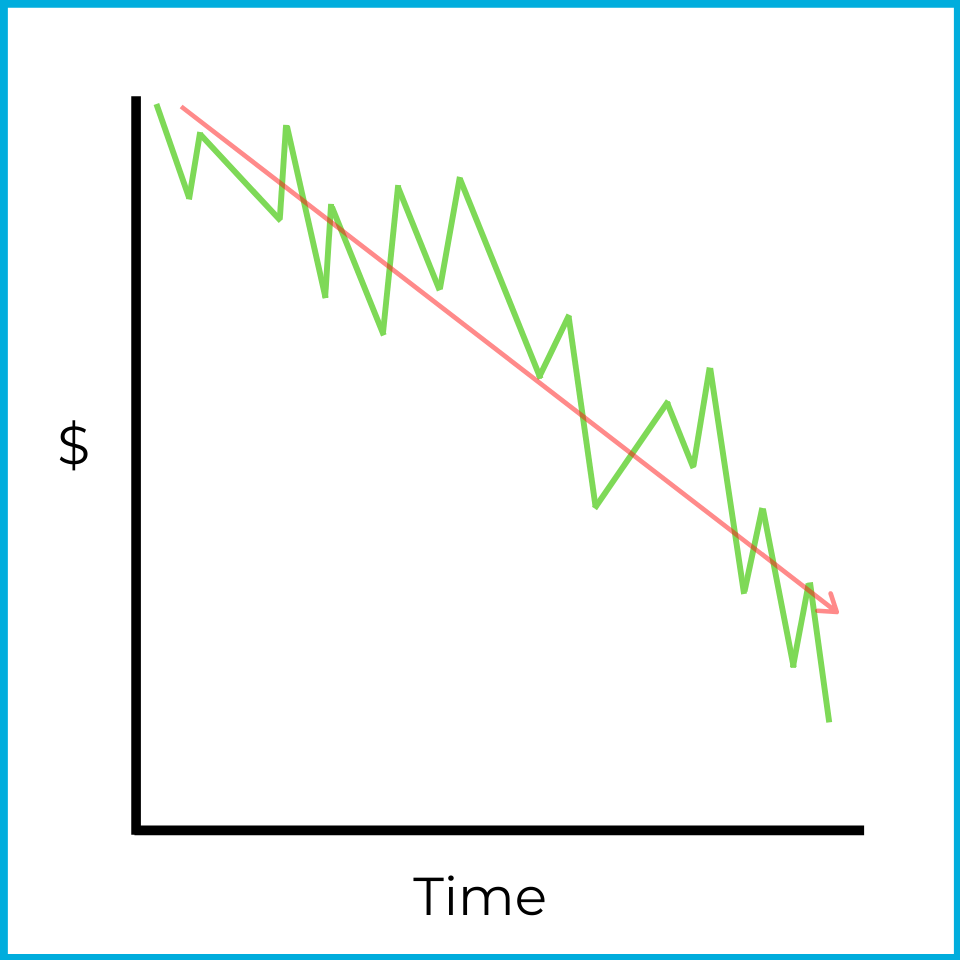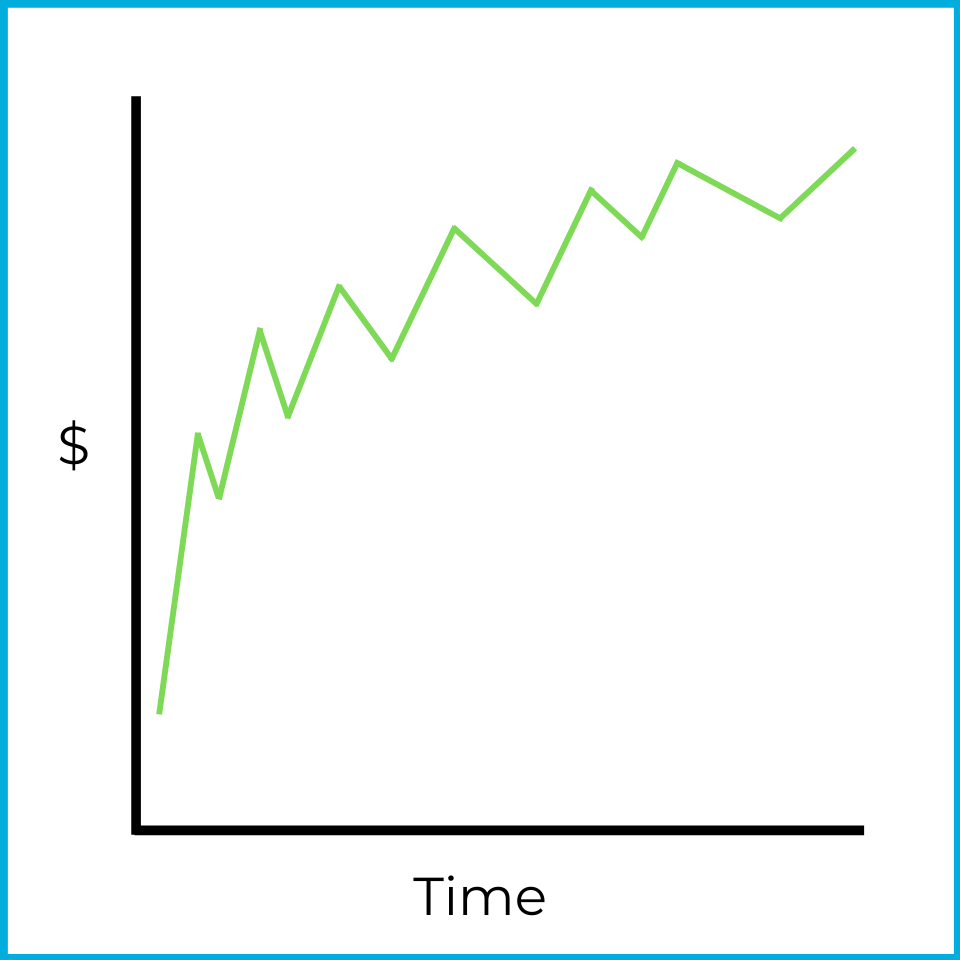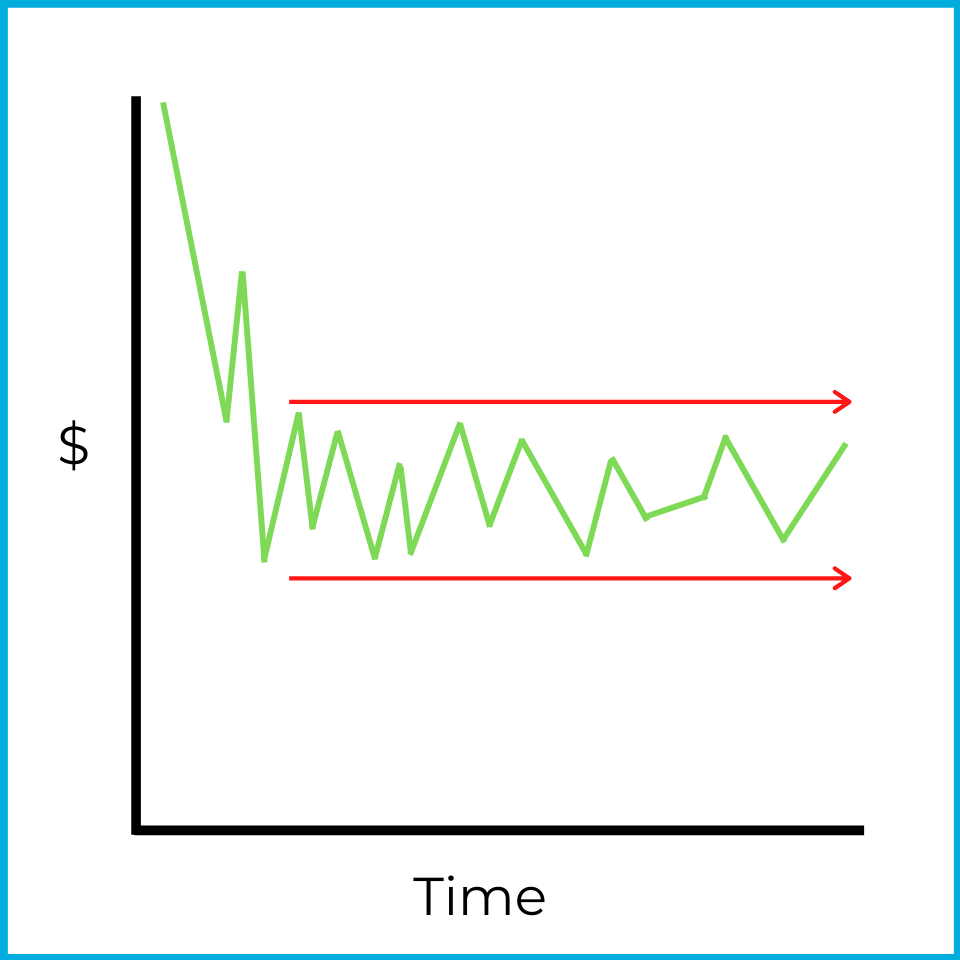A market trend offers insight into the general direction of the market. On any given trading day, market prices go up and down throughout the day. However, trend lines can be drawn through a “big picture” perspective.

Although this chart shows market movements up and down, the stock is definitely trending upwards. If this was a stock chart over the course of a month, the market was bullish over that timeframe. Temporary declines always occur in bull markets, but a high-level view would accurately describe this as a rising market.

Trend lines are also drawn for bearish markets. There are several movements upward, but market values are generally falling over this period of time.
Trends can be found with charts, but also with number-based data. The S&P 500 is an index of 500 large publicly traded companies in US markets. The general direction of the market can also be found through the advance/decline line. For example:
S&P 500 stocks
| Date | Price increases | Price decreases |
|---|---|---|
| Monday | 425 stocks | 75 stocks |
| Tuesday | 375 stocks | 125 stocks |
| Wednesday | 350 stocks | 150 stocks |
Over a three-day period, there are more stocks going up than down on any given day. You can safely assume the market is rising with the data provided. This is called market breadth, which refers to the general direction of price movements. The breadth of the market is currently bullish (increasing). However, it’s clear the market is moving towards bear territory. There seems to be a reversal occurring as more stocks are decreasing every day. This is referred to as an overbought market.
An overbought market occurs when the overall stock prices are increasing, but are moving towards a market decline. In chart form, it could look something like this:

While the market is still going up, it’s not rising as much as it was in the past. If the trend continues, eventually more stock prices will fall than rise, leading to an overall market decline.
Let’s look at the advance/decline line from the other perspective:
S&P 500 stocks
| Date | Price increases | Price decreases |
|---|---|---|
| Monday | 50 stocks | 450 stocks |
| Tuesday | 90 stocks | 410 stocks |
| Wednesday | 160 stocks | 340 stocks |
Over a three-day period, there are more stocks going down than up every day. You can safely assume the market is falling with the data provided. Again, we refer to this as market breadth, which refers to the general direction of price movements. The breadth of the market is currently bearish (decreasing). However, it’s clear the market is moving towards bull territory. This is another example of a reversal, and this would be referred to as an oversold market.

An oversold market occurs when the overall stock prices are decreasing, but are starting to trend towards a rising market. Market prices are not falling as much as they were in the past. If the trend continues, eventually more stocks will increase than decrease, leading to a rising market.
When a stock price or the general market sees a reduction in volatility, a consolidation may be occurring. If price fluctuations seem to be indecisive and stay within a specific range, a market trend is difficult to draw. For example:

While market prices were falling in the beginning, they stabilized, then stuck within a narrow range. In many cases, traders looking to make a quick buck in the market would stay away from a stock exhibiting this behavior. However, this may be the perfect environment for a flat market strategy (like covered calls or short straddles, which we’ll learn about later).
Market volume is another trend that technical analysts pay attention to. It measures the amount of trading in a given stock or the general market. For example, the average daily trading volume of Snapchat stock (ticker: SNAP) is 23 million shares (as of January 2022). If there’s a significant increase or decrease in the number of shares traded on any given day (for example, 150 million shares of SNAP are traded in one day), it would grab a technical analyst’s attention. While the consequence of an increase or decrease in trading volume could vary, it’s another piece of data chartists care about.
In conclusion, market trends of different shapes and sizes can be identified in the market. Technical analysts pay close attention to these trends to influence their trading activity. In the real world, a fair amount of knowledge, experience, and luck is required to consistently time investments for positive returns. For the Series 7 exam, you need to know the basics of these trends and what they indicate about future market movements.
Sign up for free to take 4 quiz questions on this topic